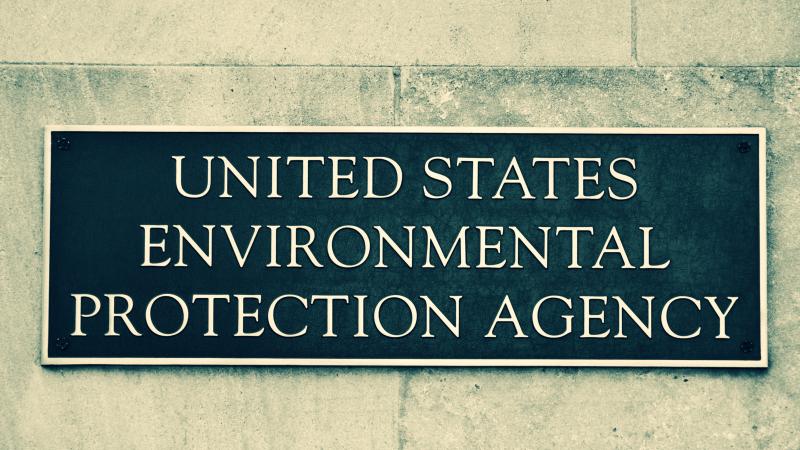Chemical company Chemours unsure of science in EPA's new standard on forever chemicals
Chemical company Chemours said at first glance, it has “serious concerns with the underlying science used and the process EPA followed.” The company said it fully supported regulation “grounded in the best available science and follows the law.”
(The Center Square) -
Chemours, DuPont and residents along the Cape Fear River between their Bladen County plants and Wilmington on Wednesday finally gained a measure of long-sought news.
Chemours has concerns about the science and process to reach this end result. For taxpayers, the full announcement and action is another $21 billion from the $1.2 trillion Infrastructure Investment and Jobs Act of 2021.
The U.S. Environmental Protection Agency has, for the first time, given legally enforceable drinking water standards related to PFAS. That's the acronym for per- and polyfluoroalkyl substances that are widely used, long lasting chemicals, components of which break down very slowly over time.
EPA Administrator Michael Regan, in Fayetteville to make the announcement, said $1 billion “in newly available funding” is to help states and territories implement PFAS testing and treatment at public water systems and to help owners of private wells address PFAS contamination. That sum is part of a $9 billion investment helping communities impacted by PFAS and other emerging contaminants. Another $12 billion is for general drinking water improvements, “including addressing emerging contaminants like PFAS.”
“Drinking water contaminated with PFAS has plagued communities across this country for too long,” Regan said. “Our PFAS Strategic Roadmap marshals the full breadth of EPA’s authority and resources to protect people from these harmful forever chemicals. Today, I am proud to finalize this critical piece of our Roadmap, and in doing so, save thousands of lives and help ensure our children grow up healthier.”
Chemours, in a statement provided to The Center Square, said it would review the final regulation and at first glance has “serious concerns with the underlying science used and the process EPA followed.” It said it fully supported regulation “grounded in the best available science and follows the law.”
The statement said in part, “Chemours has taken numerous steps to proactively address legacy constituents including installation of emissions control technologies, implementation of offsite drinking water programs, and the comprehensive settlement to resolve all PFAS-related drinking water claims of a defined class of U.S. water systems, which received final court approval on Feb. 8, 2024.
“Fluorine chemistries are essential and can be made responsibly, which is why we have made and continue to make significant capital and technological investments as part of our commitment to responsible manufacturing, including for the many critical products that support national and Biden administration priorities like American manufacturing of semiconductors and decarbonizing the energy sector.”
While the EPA says there is a standard, details it lists says it is “setting a maximum contaminant level goal, a non-enforceable health-based goal, at zero. This reflects the latest science showing that there is no level of exposure to these contaminants without risk of health impacts, including certain cancers.”
The maximum contaminant level is 4 parts per trillion for PFOA and PFOS, individually. For PFNA, PFHxS and GenX chemicals, the goal and the standard are each set at 10 parts per trillion. The EPA also set a limit for any mixture of two or more from the PFNA, PFHxS, PFBS and GenX chemicals.
To understand the acronyms, PFOA is perfluorooctanoic acid; PFOS is perfluorooctane sulfonic acid; PFNA is perfluorononanoic acid; PFHxS is perfluorohexane sulfonate; and PFBS is perfluorobutane sulfonic acid.
The EPA said extensive research and science led to the ruling. It considered how PFAS affects public health, conversations and decisions included the water sector and state regulators, and effective implementation was part of the discussion.
More than 120,000 comments were offered on the proposed rule in the process.
The StarNews newspaper in Wilmington was first to report contamination found in the Cape Fear River by N.C. State researchers in June 2017. It led to multiple litigations, the building of a $100 million thermal oxidizer designed to reduce air emissions at the riverside plant, testing, hearings and lots of finger-pointing for blame.
At the time of discovery, the impact of GenX – a PFAS used to make nonstick coatings, for example on cookware – and other PFAS on humans was evolving. Animal tests had indicated cancer possibilities, and humans were believed to be at risk for kidney or testicular cancer, elevated cholesterol levels and health challenges for children.
Downstream from Chemours at the Fayetteville Works Plant, the Cape Fear River is a source of drinking water for about 1 million people in the region of a state with population 10.8 million.
















